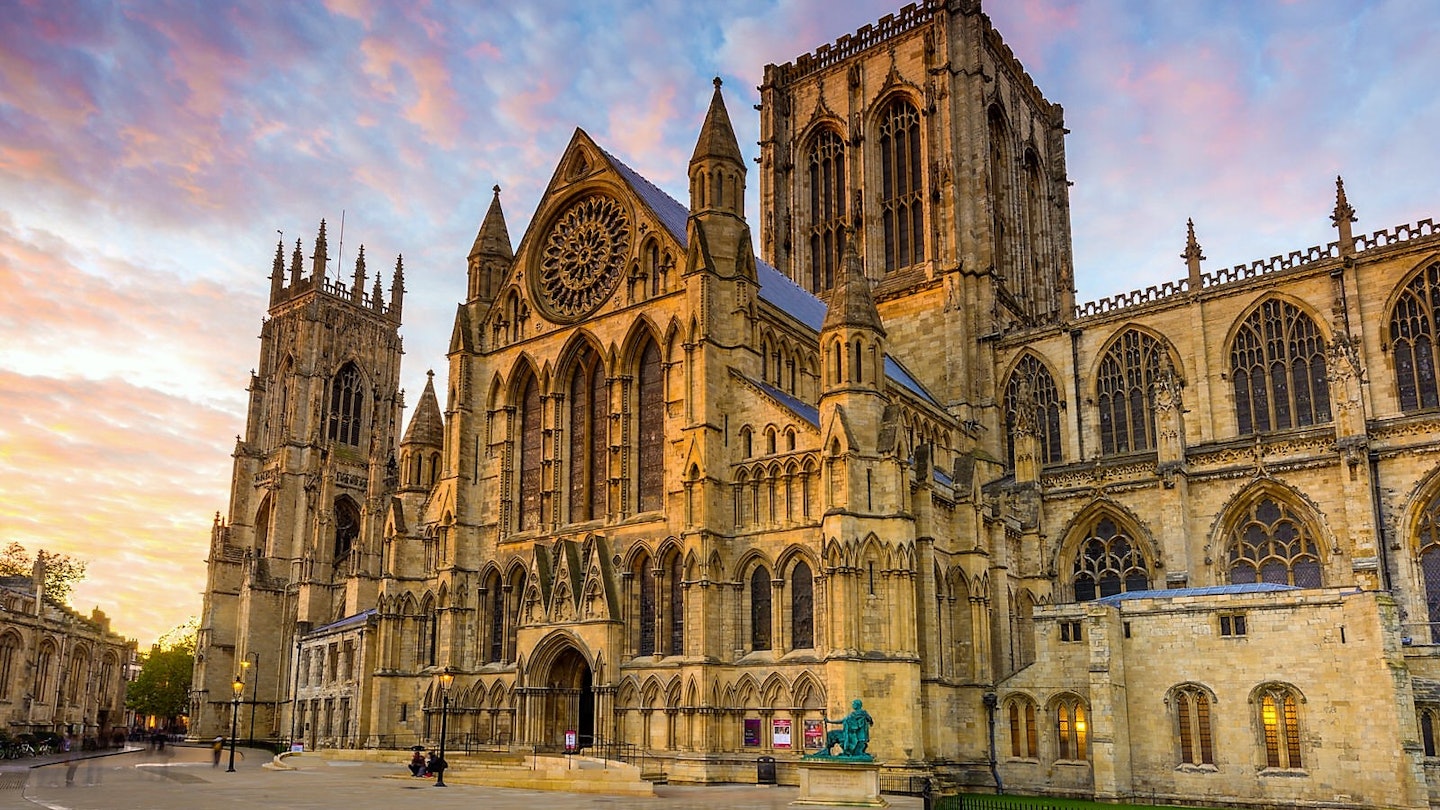Yorkshire's best castles, cathedrals and stately homes
Sep 3, 2018 • 5 min read

York Minster is one of the county's most famous landmarks but there are many other architectural wonders to visit too © Chris Hepburn / Getty Images
There are so many fine architectural wonders in Yorkshire it can be hard to know where to begin. Colonnaded stately homes appear stuck in time. Medieval castles teeter above small market towns, and grand gothic cathedrals and churches continue to celebrate evensong. They are all a living reminder of Yorkshire’s illustrious past and a treat not to be missed in the present – here’s our pick of the best.

Best preserved: Skipton Castle
Many of Yorkshire’s medieval castles are now toothsome ruins, but not this one in the pretty Georgian market town of Skipton. Even at more than 900 years old, Skipton Castle is one of the best preserved and most complete in England. This is largely due to 17th-century matriarch Lady Anne Clifford, who took the castle under her wing and set about restoring it after a battering during the Civil War. The castle is not huge, but its squat demeanour, early Tudor courtyard and maze of fully roofed rooms give it bags of character.

Best for atmosphere: Ripley Castle
Three miles from elegant Harrogate, Ripley Castle has the full package. The village it sits within is a gorgeous blip on the map with a lively pub and a gin distillery in an old stable block. Wild deer bound through the estate grounds and drink at its lake. The only way to peep inside the castle is on a summer guided tour, but there are also activities to sign up for such as archery, body zorbing or bush craft. In autumn 2018, a gin school began operating inside the castle’s map room, using botanicals from its Victorian hothouse.
Best for grandeur: Castle Howard
Castle Howard, made famous as the filming location of classic 80s’ TV show Brideshead Revisited, is the crème de la crème of Yorkshire’s stately homes (it’s not actually a castle). The original wing was built by Sir John Vanburgh for the third Earl of Carlisle in the early 1700s and the estate has been home to the Howard family ever since. Touring the house with its knowledgeable docents is a masterclass in Baroque and Palladian design, and the grounds are equally impressive – the off-limits mausoleum and perfectly formed Temple of the Four Winds look like they've been flown in from Rome. Rare statues line the walkways and a mysterious giant pyramid folly seemingly floats in a far-flung corner.

Best for art & design: Harewood House
Little known beyond Leeds, Harewood House’s earls have long had a good eye for art and design. Thomas Chippendale was commissioned to furnish the new house in 1767, then in 1797 JMW Turner was invited here to paint. To this day, the priceless Chippendale furniture and Turner watercolours remain important pillars of the estate’s collections, which also include paintings by Italian renaissance masters. The current Lady Harewood launched the Terrace Gallery for contemporary art in 1989, with works by British artists such as Antony Gormley and David Hockney. The terraces are a work of art in themselves, designed by legendary landscaper ‘Capability’ Brown.
Best for outdoors: Fountains Abbey & Studley Royal
A band of rebel monks founded Fountains Abbey in the 12th century, but it was only after Henry VIII dissolved the English monasteries that Fountains Hall and then Studley Royal were added to the wooded valley in which it sits. The former is an Elizabethan manor house built partly with stone from the then-crumbling abbey between 1598 and 1611. The latter, built in the 18th century by a disgraced former Chancellor of the Exchequer, is an all-singing, all-dancing pleasure garden where paths lead to magnificent neoclassical follies, wistful water features and contemporary art installations.

Best for archaeology: York Minster
You don’t get the title of Northern Europe’s largest medieval cathedral without some very deep foundations, and underneath York Minster there’s an incredible layer cake of history. There’s a Roman basilica, a wooden chapel from AD 627, the odd Viking relic and an 11th-century Norman stone minster – fragments of them all can be seen in the cathedral’s not-to-be-missed Undercroft museum. Above ground, the cathedral itself is a magnificent Gothic construction: climb the tower for views over York.
Best for solitude: Helmsley Castle
The craggy ruin of Helmsley’s medieval castle is one of those secret dens where the winds howl loudly and the quiet can feel unsettling. A singular tower is moored in steep-sided moat ditches and looks achingly lonely from afar. Beyond it there’s a Tudor mansion to nose around with exhibits exploring how the Civil War signalled the castle’s demise. Once a month, English Heritage opens up its Helmsley Archaeological Store for guided tours, giving enthusiasts the opportunity to handle treasures from its North of England collection.

Best for views: Scarborough Castle
Hidden behind a clifftop fortification above the seaside town of Scarborough, the 16-acre headland of Scarborough Castle, once used by Romans and later King Richard I to keep watch over the northeast coastline, is the perfect spot for picnickers. On a windy day, visitors can feel like they’re about to be blown off the edge of the world, but the views out to the North Sea are awesome. Trace the broad walls, visit the Master Gunner’s House exhibition, and tip-toe to the very edge to see the ruins of a 2000-year-old Roman signalling station before grabbing an outdoor table for coffee and cake.
Best for contemplation: Beverley Minster
Beverley Minster’s blessing is that it is smaller than York’s, making it less visited and very serene by comparison. Unlike York Minster, it’s also not technically a cathedral, though it still feels like you’ve stumbled upon something grand and special when you see the intricate 14th-century carvings of grotesques and musicians lined up along the north aisle. The Percy Canopy (1340), decorating the tomb of local aristocrat Lady Eleanor Percy, is one of the finest examples of Gothic stone carving in the country.

Best for events: Lotherton Hall
The giant chess board in the landscaped gardens and aviary housing some 200 species of rare birds are permanent installations at Lotherton Hall, but this country estate, between Leeds and York, sets itself apart with its entertaining roster of events. That could mean a street-food festival in its fields, a vintage weekend with swing bands on the lawn and curio stalls in its stables, or a dragon animatronic for St George’s Day. The hall itself is a beautiful Regency-period building and has rotating exhibitions in its Fashion Galleries.
Plan with a local




